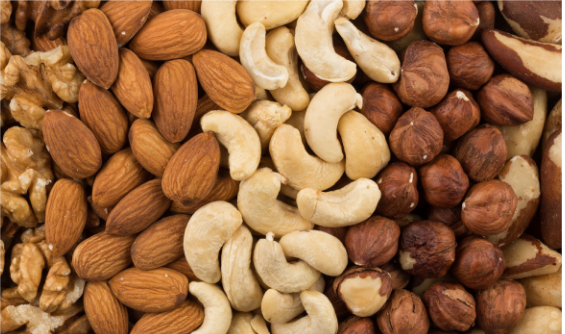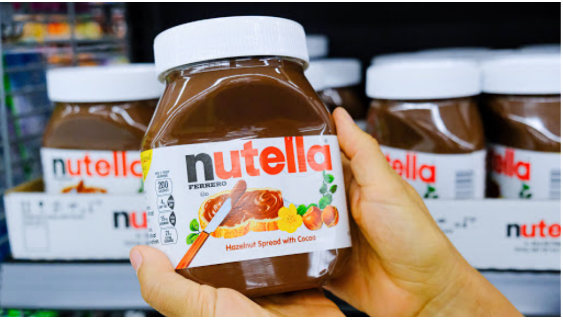Your cart is currently empty!
A Brief History Of Food Advertising
The word “advertising” is derived from the French advertisement, a giving notice or announcement. An advertisement is information that is publicly communicated through mass communication. The advertising business is an aspect of commerce that is an integrated part of industrialized and affluent societies that can afford to purchase goods. Advertising brings notice to a wide range of consumer products, including food, a major consumer of advertising.
In the 1990s United States, food and beverages formed the most heavily advertised product. Approximately 40 to 50 percent of television commercials were for food products, amounting to ten to fifteen commercials every hour. Advertising takes place at several levels in the food marketing chain. Ads in the United States may be issued by manufacturers individually or as a group. Also, by a marketing board representing a generic product or by wholesalers, retailers, and distributors.
The Start Of The Modern Advertising Movement
Although advertising has a long history, the modern advertising movement began with the invention of printing in the sixteenth century. Early food advertisements were presented alongside those for books, medicines, cures, and remedies. These foods and drinks initially tended to be consumed by the upper classes. English weeklies first reported coffee in 1652, chocolate in 1657, and tea in 1658. The widespread expansion of print advertising did not occur until the eighteenth and nineteenth centuries. Its spread was stimulated and encouraged by changing trade patterns, especially the rail network and the improvement of roads.
Improved means of transportation allowed for the expansion of extended regional and national trade networks. As the production of goods increased, they had to be more efficiently and effectively distributed and marketed. As much of the early advertising was contained in print media, the spread of literacy and the steep rise in the development of newspapers and magazines. Industrialization, especially after 1850, stimulated its development. It is in the last hundred years that advertising has developed into a major industry. So important has it become that it is central to the production of general communications and provides the economic basis that enables them to exist. It is also central to the development and existence of many products.
Functions of Advertising
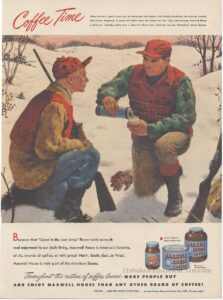
Advertising has many functions. It is used to launch new food products. The advertising campaign for Nescafé instant coffee granules in the 1950s allowed it to gain a foothold in a market with strong competition from other brands such as Maxwell House, “America’s Favorite Coffee.” It extends the sale of products already established in the marketplace. In 1956, the advertising campaign for the biscuit Snack, manufactured by Cadbury, caused an immediate increase in sales. Although its initial impact was not maintained, sales remained higher than the earlier unadvertised level for a year or so, even when almost no advertising support was given.
When Advertising Works
Advertising is used to promote the growth of a product. A marketing campaign for Callard & Bowser Butterscotch in 1959 and 1960 caused its consumption to expand by around 20 percent. Advertising also created a continued demand for a product when the original need to consume it had become redundant due to changing social and economic conditions. Bovril, fluid beef, was developed in the 1870s as a convalescence food and was later used as an energy food on expeditions and during sporting events.
With higher incomes, better eating, changing drinking habits (for example, the increased consumption of coffee over tea, and the popularity of carbonated, or “fizzy,” drinks), and the availability of new drinks, the original rationale for the consumption of Bovril had declined by the post-World War II years. An advertising campaign was introduced to remove the idea that it was an old-fashioned drink and to suggest that it was a “contemporary” one. In the history of food advertising, it has rarely been used to slow down the decline in product consumption.
When milk consumption was falling in the postwar period in Britain, especially in the mid-1950s, the National Milk Publicity Campaign succeeded in slowing down the decline rate and introducing new outlets to stimulate consumption.
Costs of Advertising
Large sums of money are spent on food advertising. In 1999 America, the top food advertiser was Mars Candy, a confectionery firm, which spent $99,488,921 ($184,000,000 in 2024) on its advertising. Second place in 1999 was Kellogg’s company, spending $82,966,590 ($154,000,000 in 2024). The top brand was McDonald’s fast-food restaurants, which spent $66,260,524 ($122,000,000). The Second place in 1999 was Burger King company, spending fast-food restaurants and Burger King $17,604,550 ($33,000,000 in 2024). As these figures suggest, not all foodstuffs are advertised to the same extent. Highly advertised foods include cereal products, confectionery, ice cream, potato crisps, snacks and nuts, margarine, low-fat spreads, and cheese. Generally, advertising of food products shows a lower percentage of expenditure than other products, including alcoholic drinks and tobacco.
Now, we can look at 2022 data for America’s top three advertising spend:
- Amazon was in first place with an ad spend of $13.5 billion in America.
- Procter & Gamble is America’s largest advertiser at $5.6 billion nationally.
- Disney closed the top three with a spending of $5 billion in America.
Advertising Media
Food is advertised through several channels. As new technologies have become available, the advertising opportunities have broadened. A number of these are especially important. Newspapers and magazines have long been a significant vehicle for advertising. Newspapers in Britain published advertisements in the seventeenth century, and as the provincial press expanded, greater opportunities became available for food advertising. In the later nineteenth century, magazines increasingly started to carry advertisements.
In the United States in the 1930s, some 20 percent of products advertised in the major print advertising media of women’s and domestic magazines were food and drink products. When radio networks were established (in 1926 and 1927 in the United States), they used advertising to bring in revenue. Food and drink manufacturers sponsored programs and advertised their products in short “commercial breaks.” In the 1950s, television introduced a further medium that owes its effectiveness to the wide range of means that can be used to promote a product: moving pictures, sound (voice and music), and the written word.
In the late twentieth century, the introduction and extended use of the World Wide Web and e-commerce had an enormous initial growth. Growth rates for online marketing since the mid-1990s have been consistently well over 100 percent, year after year. Internet advertising is undertaken through several means. In the year 2000, the majority (81 percent) of advertising took place through banners, and small numbers through sponsorship (9 percent), classified advertisements (7 percent), and other means (3 percent). Internet advertising includes sites from manufacturers, product manufacturing boards, supermarkets (which allow for online shopping and home delivery), and food enthusiast sites.
Billboards Promoting Food
Other media have provided further means of advertising food. Billboards were first used in Britain in the 1890s and are found over a wide geographical area. Light displays in cities, such as those for the carbonated drink Irn-Bru Soft Drinks in Glasgow and Coca-Cola in London, have presented advertisements as visual images within central cityscapes. Buses and electric cars (especially since the 1890s in the United States) have carried advertising, usually on their sides or rear. Manufacturers advertise their products on their distribution vans. Some also have special promotional vehicles that they use in campaigns to take their products to public places or special shows to advertise them.
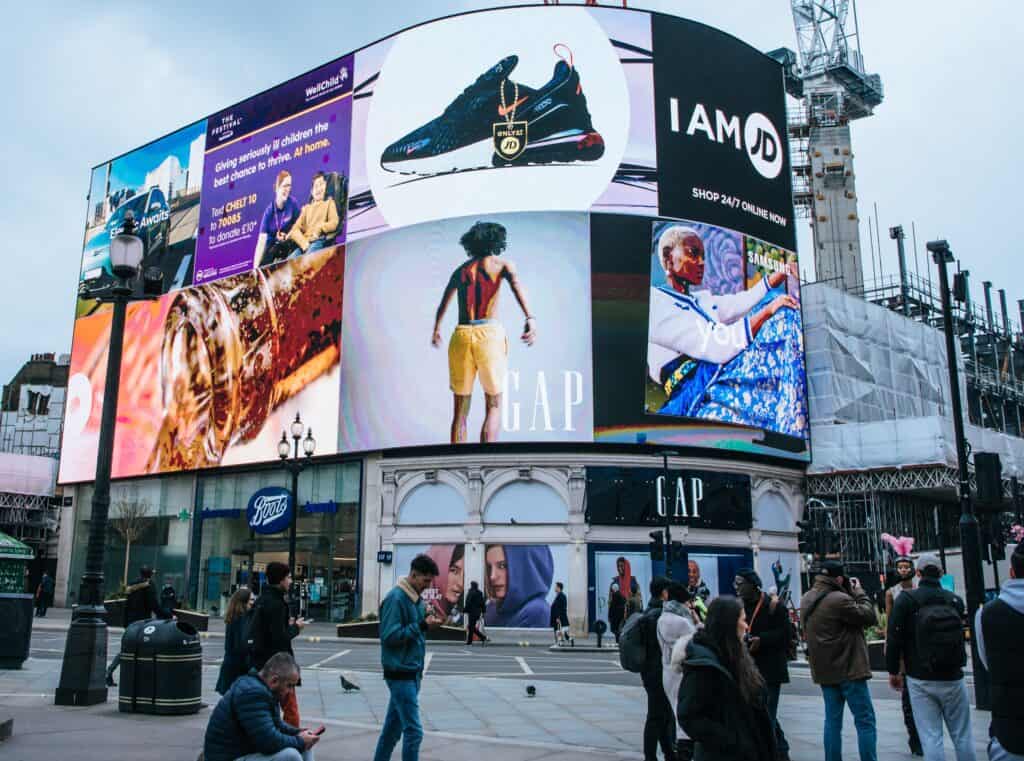
Sponsorship
Several manufacturers undertake sponsorship of major public popular and sporting events. Flora margarine, made from sunflower oil, which is high in essential polyunsaturated, has sponsored the London marathon in the late 1990s; Bell’s, the whiskey manufacturer, sponsors the Bell’s open golf championship.
Tastings
Advertising and promotion of foods are undertaken within the retail industry. Fancy displays draw attention to one or a range of products. In Britain, displays from the 1860s included decorative tins with hinged lids developed by the biscuit manufacturer Huntley and Palmers of Reading. As self-service supermarkets developed, largely after World War II, products could be displayed to draw special attention to them. Three-dimensional displays promoted a single product or a range and tended to be developed by manufacturers. Supermarkets sometimes hold special testing events where customers can sample a product, encouraging them to buy it.
Custom Promotional Packaging
Food is also sold in special promotional packets, sometimes at a “special introductory price” or a “special promotional price.” These may hold a sample of the product that can be packaged to reflect the packaging of the regular-sized product.
A range of ephemeral material is distributed to food wholesalers and retailers by manufacturers and others involved in processing and distribution. Some of this, including calendars, pens, and pads of headed note paper, is intended to remind the consumer of the product daily.

Coupons
Coupons, which allow the consumer to receive a discount on the product when they present one to a retailer, are found in various print media, especially newspapers and magazines. Currently, coupons are redeemed faster and in greater amounts than ever through social media advertising.
Advertising Targets
The medium used to advertise a product is selected for its appropriateness to that product, the nature and scope of the advertising campaign, and its desired target audience. Each medium has its values and qualities. When television became widely adopted in Britain in the mid-1950s, Bird’s Eye used this new medium to advertise frozen food products. The company knew families with televisions were likelier to be interested in new ideas such as Bird’s Eye’s products. At that time, it was recognized that there was a potentially large market for frozen food, which was a relatively new phenomenon. In the 1920s, daily newspapers were best suited to advertise foods and other products that were bought regularly. Magazines to be read by a particular social class or group carried advertisements for foods and other products they would likely consume.
Advertising To Women
Much food advertising is targeted at women, the main buyers of food in the household. Children are recognized as important persuaders as they accompany their mothers to buy the family food. Advertising is targeted at them. Recent studies of food advertising in South Africa show the need for advertisers to monitor social changes because food advertising reflects social and cultural trends, values, and attitudes. Cultural differences are also reflected in advertising. Chinese television advertisements signify family values, tradition, and technology, whereas themes in American advertisements tend to symbolize the importance of enjoyment, cost savings, and individualism.

With the emergence of global culture, specific values such as global cosmopolitanism and modernity will be spread worldwide. The history of food advertising shows that it took an undeniable cultural shift to women valuing women’s advertising. Advertising agencies are now the predominant employees in America.
Nutrition And Food Choices
Food advertising reflects changing food tastes, diet, and dietary habits. The extent of the references to nutrition, health claims, and weight loss has altered in advertisements in recent decades. Research has indicated that in the United States from the 1960s to the 1980s, there was an increase in references to health and weight loss in advertisements. Specifically, for hot and cold cereals, bread and cake mixes, frozen and pre-prepared entrees, peanut butter, canned and instant dry soup, and carbonated beverages in various women’s magazines. There was a significant rise in health claims in the 1980s, higher than in the 1960s. The percentage of diet claims appearing in food advertisements in the 1980s was significantly higher than in the 1960s and 1970s.
Between 1960 and 1980, there were substantial decreases in claims of quality, taste, status, and consumer satisfaction. These may have resulted from changes in women’s consumption and dieting behavior. There is increased demand for food that is low in calories but high in nutrition. Rising are concerns about the increasing prevalence of obesity in the United States and campaigns against fast-food artificiality. Impossible Burgers started a trend in food, moving advertising towards a junction between ‘healthy’ and ‘fake’ food branding.
Brand Names
Central to food advertising is promoting brand names that distinguish between one manufacturer’s product and that of another. As the survival of these names depends on advertising, some brands, and trade names have large advertising budgets allocated to them to maintain their status as products and their place in the marketplace. Brands and trade names arose in the nineteenth century due to increased production and the need to effectively market products. Brand names started to be promoted in the 1870s, after which their use spread quickly. Significant increases were especially noted in the early twentieth century. Even after they were rapidly adopted, the extent of their use varied geographically and throughout time.
During World War II, when widespread restrictions caused materials and food shortages, brand names were abandoned in Europe and were replaced by utility products. They came into operation again once peacetime conditions were restored. In some cases, this was not until well after all controls on food and other raw products were lifted. Developed in Western Europe, brand names were, however, prohibited in Eastern Europe. The effects of communism block the use of branding to sell food.
Naming Massive Food Brands

Manufacturers consciously devise brand names and trademarks. They are based on existing names, mainly personal or words in combination. The most common are word names that include personal names of manufacturers such as Nestlé (confectionery manufacturer) and Campbell’s (the soup manufacturer), names of food-chain stores (Safeway), and the names of food products such as Mother’s Pride (bread). Arbitrary names include Saxa table salt. Names often have an association with prestige and a range of desirable attributes. Such as quality (Ambrosia rice pudding), wholesomeness Eden Vale dairy products, Just Juice tropical fruit juices, and Lean Cuisine low-calorie frozen foods), and nutritional value (Marathon confectionery bars). Other names describe ingredients, such as Coca-Cola, a drink made from coca leaves and cola nuts. Another example is Bovril, a drink of concentrated beef essence.
Values Of A Brand
Each brand name has several functions: it ensures consistency and quality. It has a personality that makes the consumers identify with the product. it is a social and cultural marker that helps consumers identify who they are and their social group. It allows them to gain esteem within their consumer group. These values or aspects of them are reflected in advertising campaigns and advertisements.
Because of the importance of brands and trademarks in identifying foods and other products, they have become legally protected. The first protective legislation in the United States was passed by Congress in 1870. It was altered with different juridical rulings and received its final codification in 1905. Legislation has also been introduced throughout the world.
Getting Customer And Professional Reviews
Food advertisements use a range of appeals to promote a product. Rational appeals tend to be used for healthy foods. Emotional appeals are better remembered and are used for fun products or “sin foods,” such as candy or desserts. Taste claims are especially important. Products are compared with similar products in side-by-side tests that point out the qualities their competition does not have (for example, the “Pepsi challenge”). These tests distinguish the product from its competitors.
It could be how it benefits the consumer or gives the consumer an advantage over those who do not. Further, these tests suggest that the product is like an advertised brand in some way. They refer to the competition, state that the brand is at least as good as any other in a set, and use experts to endorse. They usually focus on the product’s quality, taste, or value so that it is given a heightened status.

Nutritional Claims In The History Of Food Advertising
Nutritional claims are used in advertisements for foods that benefit health and have health-giving qualities. Such claims may state that a product is “low” or reduced in calories, that it is ” cho-lesterol-free” or has “reduced cholesterol.” Food and drinks may be “lite” to distinguish them from standard foods. In the United States, regulations govern the allowable fat content in foods billed as “low fat” and “reduced fat.”
Especially for branded foods, advertisements often use slogans to help consumers remember the product. They link the product and its function. For many years, the slogan for the Mars candy bar has suggested that it gives the consumer energy. With the product, they could undertake a range of activities throughout the day. Including A Mars a day helps you work, rest, and play. The slogan “Bridge that gap with Cadbury’s Snack” suggested that the biscuit could be eaten to fill the gap between meals.
Celebrity Endorsements
Food advertisers use celebrities who enjoy public recognition to endorse or act as spokespeople for a product and recommend it to the public. Especially after 1920, advertisers were aware of the relationship between popular culture idols and their audiences. Important early endorsers included movie stars and popular entertainers.
The list was later extended to include television stars and individuals from political, sports, the arts, and business occupations. In an endorsement, an endorser makes the product familiar to the public. This will happen in four ways:
- Explicitly (“I endorse the product”)
- Implicitly (“I use this product”)
- Imperatively (“You should use the product”)
- Co-presently (where the endorser appears with the product).
In an endorsement, celebrities transfer meaning from themselves (their values, status, class, gender, age, personality, and lifestyle) to the product. People consume a product associated with the star and their star image through that process. Celebrities are chosen to represent values embodied in the products they endorse. Currently, we are living in the golden age of celebrity chefs.
John Houseman failed as an endorser for McDonald’s, although he had been successful in other endorsement campaigns. Endorsements fail when they do not succeed in transferring meaning. The values between the celebrity and the product can be too wide. The meaning might shift the effectiveness depending on the public perception of the endorser.
Controls on Advertising
Several controls govern all food advertising. Some of these regulate advertising in general. Defamatory statements, false representations, offers to contract, incitements to crime, contempt of court, breach of copyright, and infringement of trademarks are covered by legislation. Governing libel, deceit, contracts, crime, and the infringements of rights. From a historical perspective, in Britain during the late nineteenth and early twentieth centuries, legislation. This included the Indecent Advertisements Act of 1889 and the Advertisements Regulation Act of 1907, amended in 1925. At a wider level, the general law also affects all advertisements.
The Associated Advertising Clubs Of The World
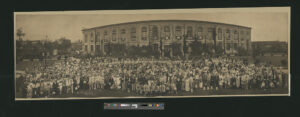
Codes of advertising have been issued as guidelines to advertisers. From 1911, steps were taken to provide codes of practice in the United States. The Associated Advertising Clubs of the World issued early codes. Guidelines have also been expressed in several codes, such as the British Code of Advertising. The Code, issued in 1979, embodies the principles that all advertisements should be legal, decent, honest, and truthful. All advertisements should be prepared with a sense of responsibility to the consumer and society.
All advertisements should conform to the principles of fair competition as generally accepted in business.” The codes contain specific rules that govern food advertising, packaging, and labeling of foodstuffs. They define how foods can be described and the nature and scope of the nutritional information presented on the packaging. Nutritional information has become increasingly widespread in the European Community and the United States. In Britain, sections of the Customs and Excise Act 1952 prohibit misdescription in advertisements of beer and spirits.
The Food and Drugs Act Of 1906
The Food and Drugs Act contains certain requirements for advertising and labeling food. Several regulations deal specifically with the representation of food claims. Diet foods are particularly regulated. For example, in the 1970 British Labeling of Food Regulations, which requires a claim be made in an advertisement or on a label that any food is an aid to slimming, it must be substantiated. Also, a statement must be included that the food cannot aid slimming except as part of a diet in which calories are controlled. By calorie counting, low carbohydrate/high protein or other means.
Other regulated aspects of “slimming” include diet plans, aids to dieting, foods, appetite depressants, and weight-loss products. Parallel regulations and advertising codes have also been introduced in countries like the United States. In the 1980s in the United States, consumer protection remained the major rationale for regulating advertising. Other forces included new media technologies, issues of privacy and fairness, environmentalism, religion, changing economic conditions, the deregulation movement, and foreign regulatory initiatives.



